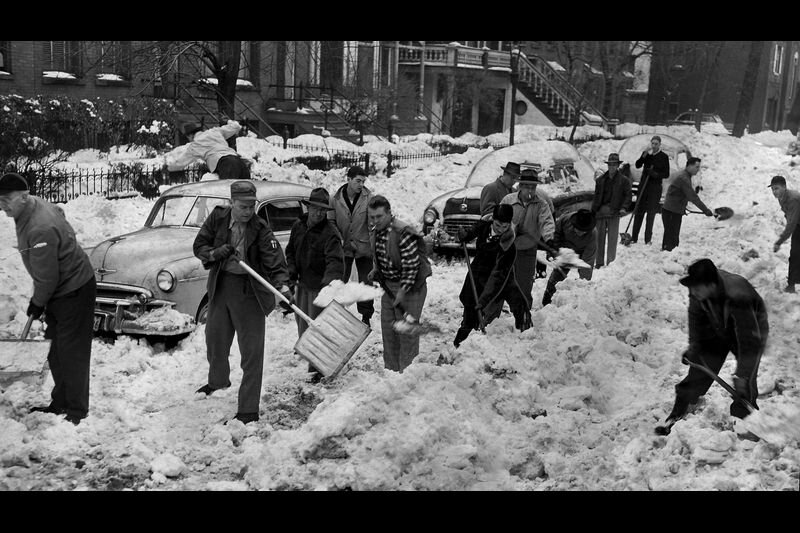History of Dibs: Is it a Chicago Thing?
History of Chicago’s “Dibs” System: Did begin in Chicago?
After a heavy snow, digging out your parking spot and marking your territory with anything you can get your hands on, otherwise known as dibs, is a Chicago winter tradition. Off top, “Dibs” may sound completely illegal to most people, and that’s because it is!
When it’s warm out, you’ll probably never give Dibs a thought. But during Chicago’s long winters—when the weather is so frigid that it feels like the violent Lake Michigan winds are ripping layers of skin off your face—many Chicagoans shovel out parking spots before the plows have arrived, and as a result feel they’ve “earned” the spot.
Ever since I can remember, this winter season parking system has fostered an unusual amount of respect (or, perhaps just fear) for an unwritten rule nearly all Chicagoans obey: “don’t mess with Dibs fam”.
It’s observed by mostly everyone in the city, and it’s what has kept the wild, outlawed system of Dibs alive for decades.
Digging for dibs
Chicago neighbors along the 1800 block of Lincoln Park West picked up their shovels and worked together to clear the block Dec. 29, 1951, after a big snowstorm. Yes, the whole block — not just the spots where their own cars happened to be or the spots in front of their homes. (Chicago Tribune)
According to Peter Alter, a resident historian at the Chicago History Museum, that original system of snow meeting labor with entitlement as a catalyst comes, appropriately enough, from the Big Snow of 1967. That storm, in which a record 23 inches of snow fell, appears to be when Chicagoans finally felt they had the right to the parking spaces they cleared.
It makes sense, in that that snow was notable not just for being deep. It was heavy, too, and it fell after the city had seen record January highs in the 60s only two days before.
Alter cited a Feb. 9, 1967, Tribune editorial with the headline "Post-Blizzard Etiquet [sic]."
"The way the references were written, this was a new thing," he said.
"Does an automobile owner have any special rights to a parking spot which he has spent hours shoveling out?" the Tribune states. "Motorists in a good many parts of the city obviously think they do, because they are staking out their domains with folding chairs, carpenters' horses, and anything else that may come to hand."
Blizzard of 1979
A Chicagoan on the North Side put a polite dibs sign on his or her shoveled parking spot on Jan. 23, 1979. | Photo: Ernie Cox Jr./ Chicago Tribune
Dibs has existed in some form since at least 1967, documented by a Chicago Tribune article covering the record-setting Chicago blizzard of ‘67 that described motorists in the city “staking out their domains with folding chairs, carpenters horses and anything that may come to hand.”
The official term was coined in 1999 by a Tribune columnist who pointed out that, at the time, you could even straight up call Dibs on a spot you hadn’t even shoveled yet—you’d claim it on a government-sanctioned website, ChicagoShovels.org. It’s really not all that shocking if you understand typical Chicago culture; tensions unresolved by the city of Chicago far too often result in intolerable levels of inaction.
But it’s just one example of a decades-long structure on city parking laws—one that, whether you love it or hate it, sets everyone off for no good reason.
Mattress special
Parking spaces were hard to come by after heavy snow hit the city. Motorists who have dug them out employed some inventive methods to protect them. A chair and a mattress serve the purpose on Wabansia Avenue near North Avenue on Feb. 3, 1978. | Photo: Karen Engstrom / Chicago Tribune
Knowing all of this, every year many people ask… Where did “dibs” come from, and is it OK?
Well, a lot of thoughts and ideas have already been spilled on this topic (especially the second part), so I tried to bring you a renewed legal and historical context that you can flex out at your next cooler talk session as a hot take guaranteed to spark a wave of spill.
As for where it started, some say Pittsburgh and Baltimore allow some form of dibs, and like Chicago, they tend to see increased animosity even among the friendliest neighbors.
Snow parking
A toy car stakes a claim on a shoveled-out parking spot on Huron Street and Damen Avenue on Chicago's West Side on Jan. 12, 2009. | Photo: Michael Tercha / Chicago Tribune
In Boston it’s called “space saving,” but it is only honored by the city for about 48 hours after a snow emergency is declared.
In Philly, it’s called “savesies” and condemned by local authorities. In fact, in 2013, the Philadelphia Police Department launched a “no savesies” campaign, encouraging Philadelphians to call 911 to report their space-saving neighbors to help fend off violent confrontations.
In Minnesota, they might laugh at you for dibbing.
One example of this, in a recent interview, the head of snow removal laughed when told him about Chicago’s tradition of dibs.
“Ha ha ha, no. We haven’t seen anything like that here,” says Mike Kennedy.He explained that his city avoids the problem with a carefully designed snow emergency plan, which requires car owners to move their vehicles to one side of the street so that city trucks can plow during the first 48 hours of a storm.
There’s a similar snow ban in Portland that make special lots available for parking during designated plow times.
Do Better
A resident of a West Rogers Park block cleared dibs stuff and created an "art installation." | Photo: Derrick Bedard
Whether we believe dibs started in Chicago or somewhere else, history recognizes dibs’ deep roots in Chicago, but we also know the city can do better.




